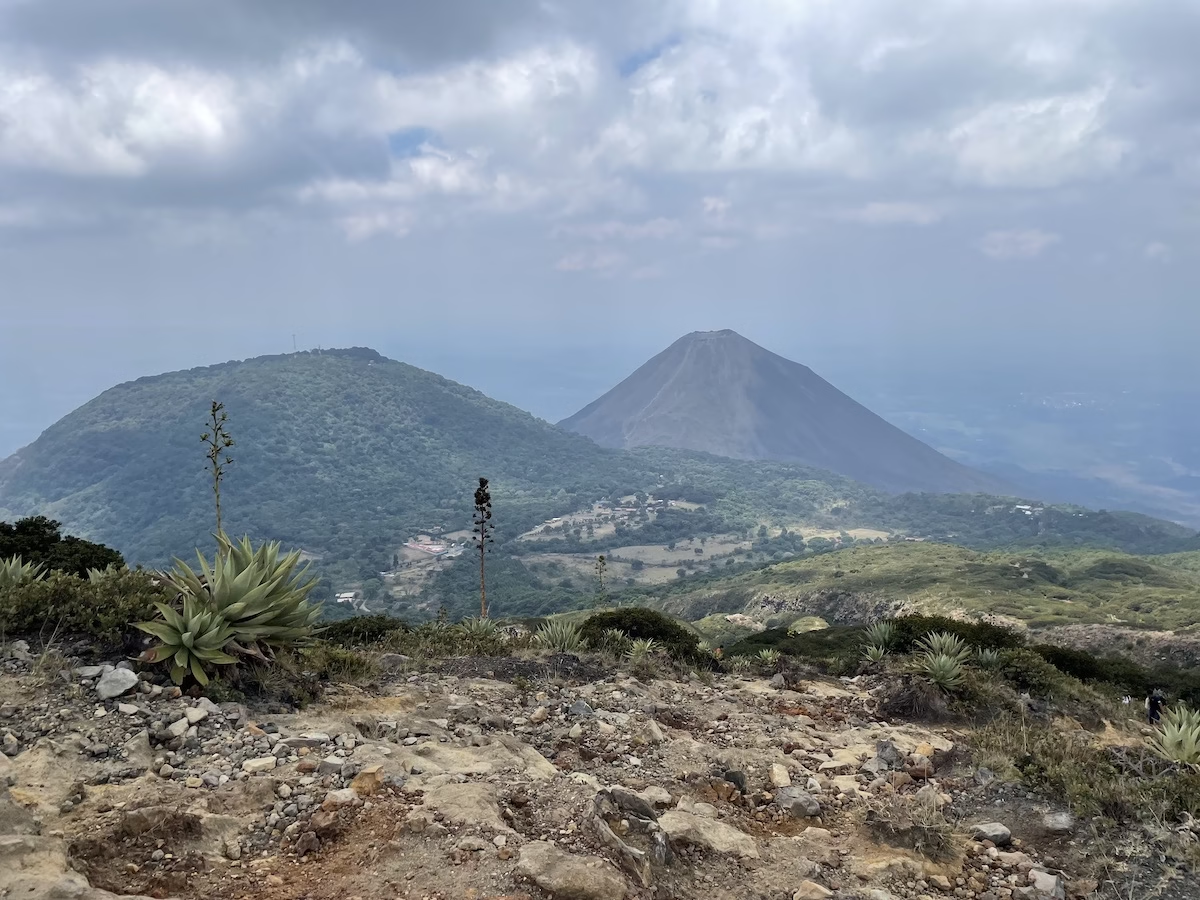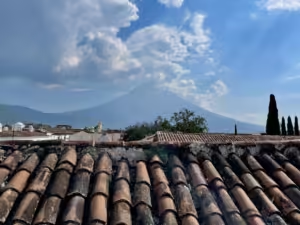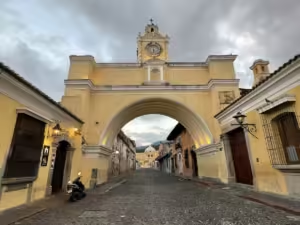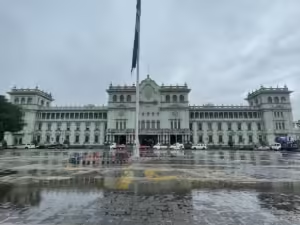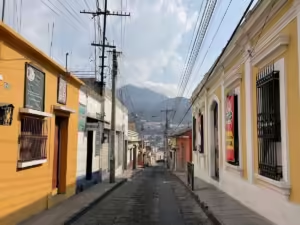El Salvador is something of an enigma. For years, the country was synonymous with crime and gangs. Now, El Salvador is poised to reinvent itself as the next big thing in Central American tourism. The country’s sights might not be as magnificent as those of its neighbors, but the El Salvadoran people stand out as some of the friendliest and most welcoming in a region known for friendly, welcoming people.
And the one thing these friendly people want is for you not to be put off by El Salvador’s history. The days of tattooed thugs and armed paramilitaries running the show are long gone. For better or worse, the president’s controversial plan to clean up crime has worked. El Salvador is now perfectly safe. It’s also on the verge of becoming a hot new tourist destination. This is the time for all you travel hipsters to visit El Salvador so you can say you went there before it was cool.
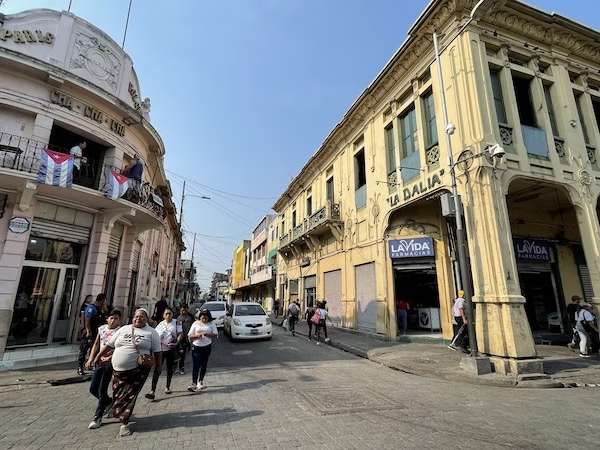
Things to Know Before Traveling to El Salvador
Did I mention El Salvador was safe? Seriously, the country is exceptionally tranquilo. Gangs like the dreaded MS-13, which once operated with impunity, are now essentially gone. There’s still probably some petty street crime in some parts of some big cities like San Salvador. We walked around central San Salvador after dark and were just fine.
It’s a shame that El Salvador’s old reputation seems to be lingering. We came across a number of tourists throughout Central America who were skipping El Salvador due to fear of crime. No amount of convincing on our part seemed to change their minds. I guess bad reputations aren’t so easy to get rid of. I’ll keep trying. Don’t worry about it. El Salvador is now perfectly safe for tourists. It might even be safer than where you’re from.
El Salvador’s Turbulent History
El Salvador’s bad reputation didn’t form in a vacuum. The country has suffered through a turbulent history, full of brutal political violence.
During the 1930s after years of repression and social unrest, the Salvadoran Communist Party, co-founded by Farabundo Martí, led a revolt against the government. The government, of course, cracked down brutally, killing between 10,000 and 40,000 people. Most of the victims were indigenous peasants. This revolt is called “La Matanza.”
Another civil war burst out in the 1980s, following the assassination by death squad of popular left-wing Catholic Archbishop Óscar Romero. Several groups formed the Farabundo Martí National Liberation front, A.K.A. the FMLN. The civil war lasted until 1992. Over 75,000 people were killed and many more were “disappeared.”
While there were atrocities committed on both sides, the U.S. government and the CIA actively supported right-wing death squads throughout the entire conflict. The United Nations estimates the FMLN committed around 5 percent of war crimes, while the U.S. backed government and right-wing paramilitary forces were responsible for about 85 percent.
Peace accords were signed in 1992, and since then the FMLN has given up its weapons and turned to electoral politics. They are now the main left-wing opposition to both the establishment political parties and Bukele’s Nuevas Ideas.
The post-war chaos also left fertile ground for the growth of gangs and crime. The dreaded MS-13 actually formed in Los Angeles in the United States. During a tough on crime crack down, the gang’s leaders were deported to El Salvador, where they found plenty of opportunity to grow into the scary, tattooed boogie men we know and loathe today.
Again, that’s now all in the past. MS-13 and their like are essentially gone. El Salvador is now one of the safest countries in the region.
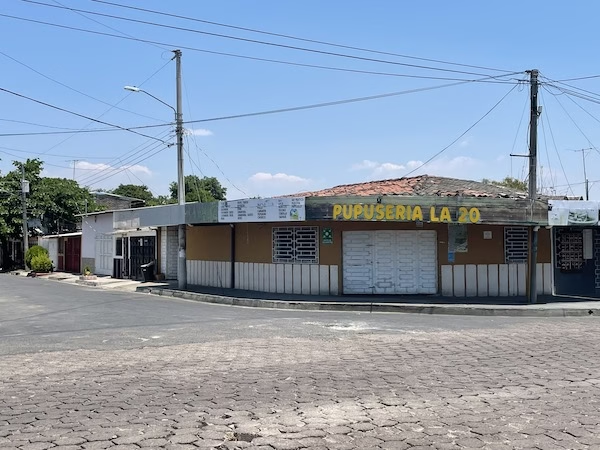
The State of Exception and “The World’s Coolest Dictator”
UPDATE: So, you’ve probably heard Nayib Bukele is now one of Donald Trump’s best buddies and is holding deportees in his massive prison. There is now mounting evidence that Bukele also made deals with the leaders of some of El Salvador’s most notorious gangs for his own political gain. I still think you should visit El Salvador, but I take back anything nice I’ve ever said about the country’s president.
We have, essentially, one man to thank for El Salvador’s transformation. President Nayib Bukele. Bukele started as a left-wing mayor of San Salvador, but has since transformed himself into a sort of right-wing populist something or other. He refers to himself as “the world’s coolest dictator” and a “philosopher king.”
Bukele recently won reelection as president, despite El Salvador’s constitution banning consecutive terms. He’s super popular. You see the guy’s face everywhere in El Salvador. Markets sell t-shirts and coffee mugs emblazoned with his image. I’ve heard Guatemalans and Nicaraguans singing his praises, too. There’s definitely a cult of personality going on.
He’s popular for more than his looks. Bukele is one of the few Latin American politicians to truly confront the gangs that plague the region. He took them on, by force, and he won.
In March of 2022 Bukele got the legislature to declare a “state of exception”. This gave him sweeping powers and suspended certain constitutional protections like the right to a trial and freedom of assembly. He then used the military to go into gang-controlled neighborhoods and pretty much arrest everybody.
I mean that literally. Anyone who had even remote connections to gangs. Even guys who just had suspicious tattoos. They rounded up a lot of people. In total, they arrested more than 76,000 people. In a small country like El Salvador, that amounts to over 1% of the population.
Does that mean that 1% of El Salvador’s population were in gangs? For some reason, I doubt it. There are whispered stories of people being caught up in the arrests who had nothing to do with gangs. People who maybe had a personal argument with a local police officer, or young men who were simply in the wrong place at the wrong time. Human Rights Watch, and other groups have accused Bukele’s government of rights violations. The newspaper, El Faro, which has published numerous articles criticizing Bukele, recently had to move to Costa Rica to avoid being shut down.
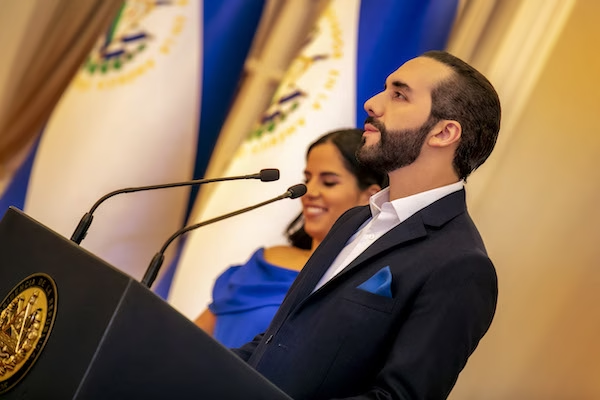
“I like going out at night, but I don’t like seeing the soldiers in the streets.”
So, on the one hand, El Salvador is safe now. On the other hand, it’s been at the expense of human rights. People can now go out at night and run their businesses without gang interference. But they can’t criticize the government and the military patrols the streets. People deserve to live their lives free from criminal exploitation, but they also deserve basic civil liberties.
It’s a tough situation, and I don’t think there are any easy answers. Despite Bukele’s popularity in the polls, most Salvadorans I talked to seemed to feel similarly. “I like being able to go out at night, but I don’t like seeing the soldiers in the streets,” said one man, pointing to a nearby troop of 18-year-olds in full army fatigues holding assault rifles. It’s good the gangs are gone, but…
Aside from taking on the gangs, Nayib Bukele is also a bit of a tech bro. He declared Bitcoin national currency, the first country in the world to do so, I believe. For the record, I saw one store in all of El Salvador that actually accepted Bitcoin as payment. He also wants to reunite Central America into one country, and to open up El Salvador to gold mining.
It’s a very interesting time for El Salvador, to say the least.
I have some more thoughts about safety and crime in Central and South America. Read them here: Rethinking Travel Safety and Crime in Latin America
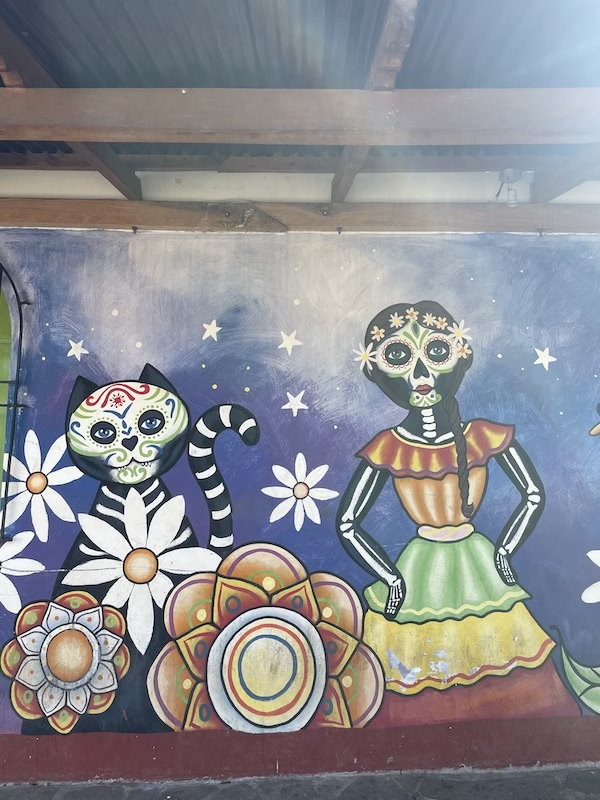
Practical Things to Know Before Traveling to El Salvador
Okay, aside from the history, the new found low crime rate and the moral and ethical questions the government’s approach raises… what else is there to know before traveling to El Salvador?
The People are Some of the Friendliest in Latin America
At one point in Santa Ana there were a group of drunks who hung out on the streets a block from our hostel. Usually, when we’d pass by them, they’d already be passed out, laying on the sidewalk with an empty bottle of rum in their hands. One day, though, they were completely awake and started talking to us. I felt nervous at first, as one does while being approached by drunks in a foreign country. But the drunks just wanted to say ‘hello’ and shake our hands. They gave us a hearty “welcome to El Salvador” in broken English, and then began to slur their way through a list of all the nearby tourist attractions that we should be sure and visit. They ended up being some of the nicest street drunks I’ve ever met.
Another day we visited nearby Santa Ana volcano. We missed the last bus back and took our chance at hitchhiking. A woman stopped and waved us in to what ended up being her Uber. When the driver dropped us off back in the city of Santa Ana, she got out and not only walked with us to the nearest bus stop, but explained to the driver where we needed to go so there was no chance of us getting lost.
These are a just a couple of examples of the warmth and friendliness we experienced in El Salvador. If you’re from the United States, you’ll find numerous people who have lived in states ranging from California to Nebraska. Everyone has a cousin or some other family member still living in the U.S. And they’re all just tickled pink to see a couple of gringos come down and visit their country.
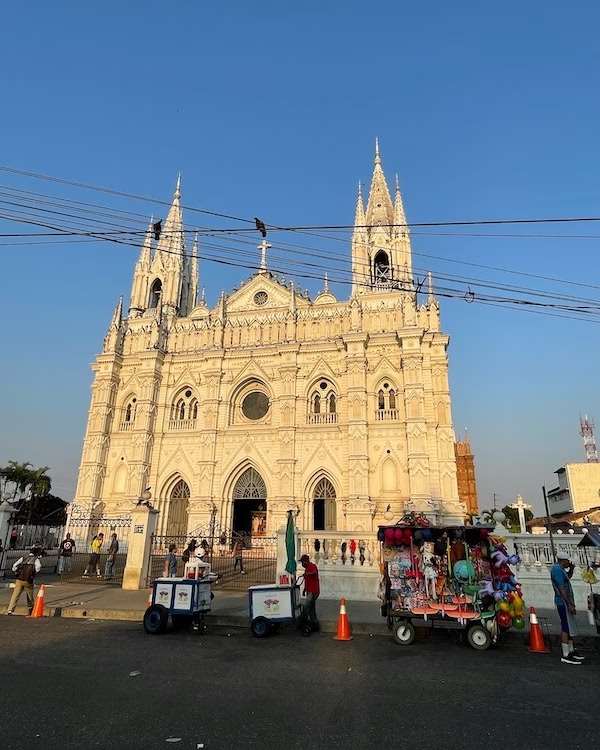
Also, a surprising number of people speak English. Especially considering how new the tourism industry is in El Salvador. It’s probably due to the amount of people who’ve spent time in the United States. Either way, El Salvador is one of the few Latin American countries where you can get by just fine without knowing Spanish.
Keep in mind that tourism here is new. There isn’t the built-up infrastructure of tour guides and shuttles or easily accessible information that you have in nearby countries. However, if you get lost, there’s always going to be a friendly local can help you find your way. Traveling in El Salvador and interacting with the locals feels much more adventurous and more rewarding.
Don’t Forget to Try the Pupusas
Pupusas are El Salvador’s national dish. They’re basically corn tortillas stuffed with cheese and sometimes beans or meat or some kind of veggie. They’re sold pretty much everywhere in El Salvador, and are generally cheap and filling. If you’re on a budget, you’re going to be eating pupusas for every meal. Even if you aren’t on a budget, you’ll eat a lot of pupusas. I’m honestly surprised they haven’t caught on more in the United States, considering the number of Salvadorans living here and how good they are.
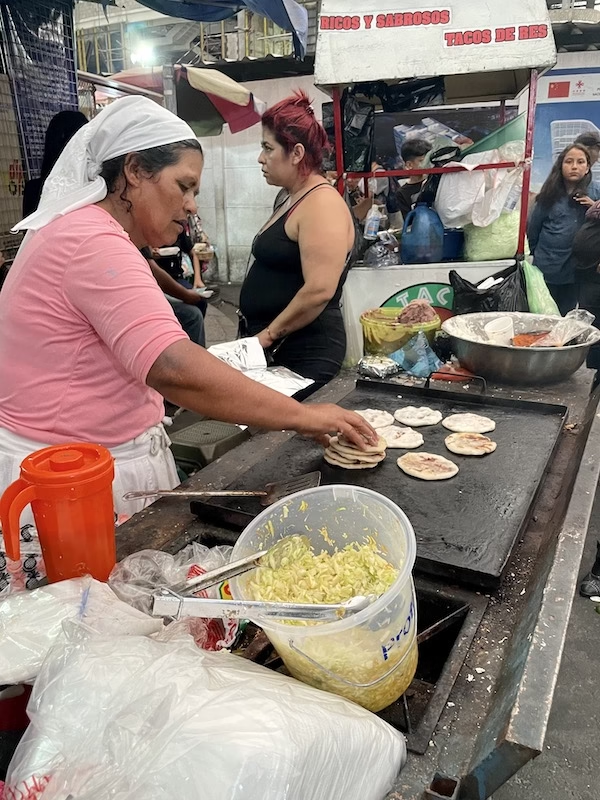
You Can Take the Bus Almost Anywhere
Don’t bother renting a car in El Salvador. The country is well connected by local buses. These are the typical, Central American variety of old school buses repurposed as public transport. They work well and are reasonably cheap and reliable.
The website Centro Coasting has a lot of information about routes and schedules: https://centrocoasting.com/elsalvador/ Just be warned that schedules can change. Double check with your accommodation before you set out.
When you get on the bus, make sure to tell the driver your destination. Be warned that he will likely forget. We missed our stop once and had to walk quite a ways out of the way in the hot sun, including a sketchy highway crossing. If you aren’t stopping at a station or terminal, make sure to keep your map app open and let the driver know when you want to get off.
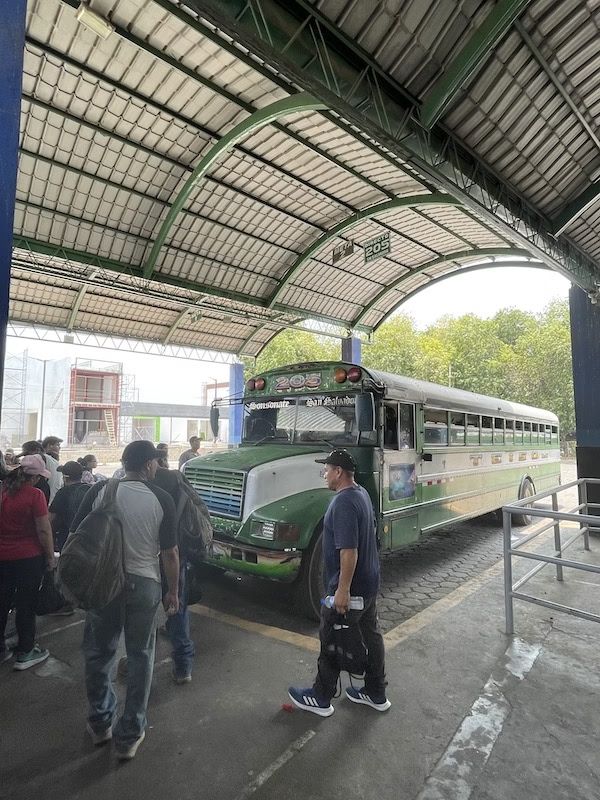
Where to Go in El Salvador
El Salvador is a small country, but it’s full of things to see and do. From colonial cities to mountain villages to surf towns, El Salvador packs a lot into its small area. One of the benefits of El Salvador’s small size: most destinations are reachable by bus within a few hours. You won’t need to bother with overnight buses here.
On one of the most fun, but also most stressful, aspects of travel is finding and booking places to stay. These days you have options ranging from dirt cheap hostel dorms to luxurious White Lotus style resorts. Thankfully, the internet is here to make finding accommodation easier.
Hostelworld is the go to app for finding hostels. For everything else, there’s Booking.com. If you book through either of the previous links, I’ll gain a small commission at no extra cost to you.
La Ruta de Las Flores
The poetically named Ruta de Las Flores, or “route of the flowers”, is probably the best destination in El Salvador. The Ruta de Las Flores refers to a series of quaint mountain villages that spread out alongside a winding stretch of highway. Each little town is slightly different, but they all have a cool, highland climate and are nestled amid beautiful tropical hills. You can easily base yourself in one town and take the bus to explore others, as well as some nearby attractions.
In my opinion, the best town on La Ruta de Las Flores has to be Concepción de Ataco. It’s one of those little villages where time seems to stand still. The surrounding area is gorgeous, but aside from touring a nearby coffee plantation, there isn’t much to do. That’s the whole point. It’s also home to the a little pupuseria called “A La Vista Lupita” which sold the best pupusas in all of El Salvador.
Besides Ataco, the town of Juayua is also quite popular. Juayua felt a little more touristy, with more tour shops and souvenir stalls, but it was still nice. It’s also the jumping off point for the fun, but slightly dangerous, “Siete Cascadas” hike.
Other towns along la Ruta de Las Flores include Apaneca and Ahuachapan. All are within a few hours’ bus ride from one another. We based ourselves in Ataco and Juayua and explored from there. It was a lovely time.
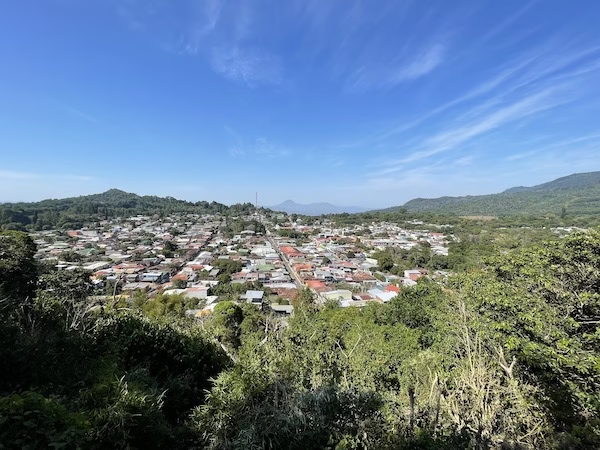
Read more about my favorite place in El Salvador here: Roaming La Ruta de las Flores: Coffee, Waterfalls, and Scenic Villages in El Salvador
Santa Ana
Santa Ana is El Salvador’s second city, located not too far from the border with Guatemala. The city itself has a bit of a run-down, bustling colonial center. Surrounding areas are full of leafy residential streets, where you still might see a wayward cow wandering down the middle of the road.
The city makes an excellent base to visit several nearby attractions: beautiful Volcán Santa Ana, overrated Lago Coatepeque, and a couple of modest, but interesting, Mayan ruins. These are all within easy day-trip distance from the city center. The central park is quite nice and the streets are generally walkable.
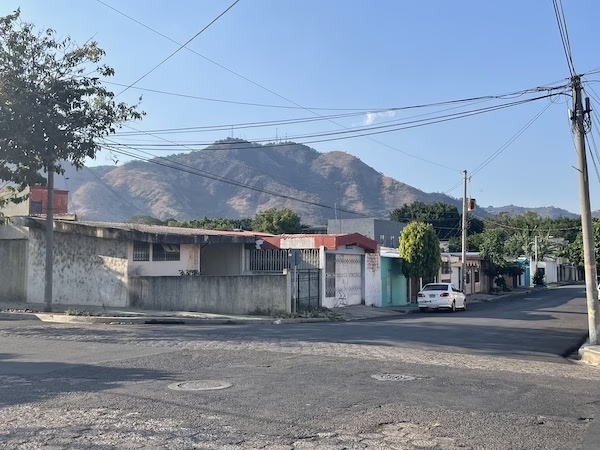
Read more about the charming, friendly city of Santa Ana here: Santa Ana: A Guide to What Might Be the Friendliest Place in El Salvador
San Salvador
Big, bad San Salvador was once famous for having the highest murder rate in the world. Now, it’s probably one of the few big cities in Central America where you can walk around downtown at night. I’m sure there are still sketchy pockets, but overall, San Salvador felt safe and comfortable. Just hot.
That being said, while I enjoyed San Salvador, outside of the center the city wasn’t really walkable at all. It felt rather sprawled out, and was full of highways and light on neighborhoods. But, the downtown area was nice enough. There were a lot of cool old buildings, as well as a bunch of construction. We also stumbled on a free orchestral concert near the main cathedral. And there were a surprising number of gay bars. We only spent one night in San Salvador, but I’m glad we did, and I would definitely go back.
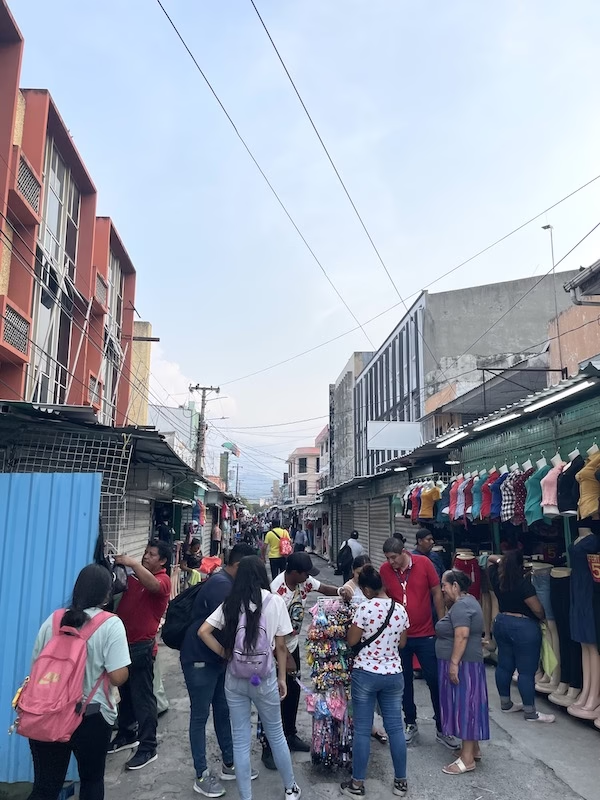
Read more about braving San Salvador’s streets here: San Salvador: Not a Travel Guide to El Salvador’s Burgeoning Capital
El Tunco
El Tunco is El Salvador’s surf capital. This is where tanned beach bros go to show off their wave riding skills. If you aren’t a tanned beach bro, El Tunco is also a great place to get surfing lessons. The waters here are beginner friendly and there’s a lot of shops offering lessons. I took a lesson, and by the end I was able to get on the board for nearly one whole second.
Besides surfing, there really isn’t too much more to El Tunco. It’s a nice enough little beach town, though, with a bit of a party atmosphere. The beach is black, volcanic, sand which is kind of cool.
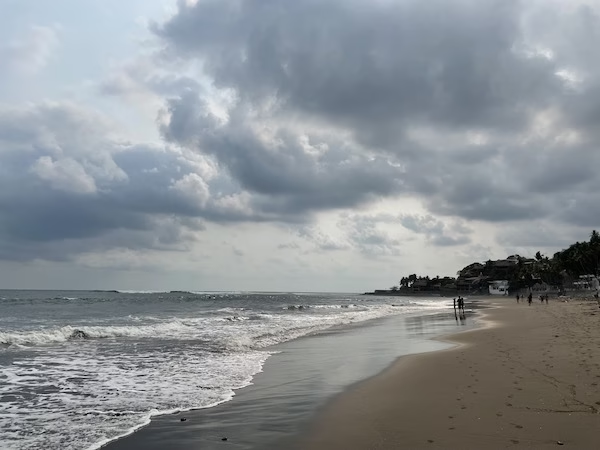
Discover more about surfing (or trying to) in El Tucno here: El Tunco: Wiping Out in El Salvador’s Beginner Surf Capital
What to Do in El Salvador
Again, for such a small country, El Salvador has a lot of different things to do. I do have to say that overall, the sights aren’t quite as impressive as they are in some of the neighboring countries. That’s okay. El Salvador isn’t going to blow you away with its sights and activities. It’ll blow you away with the warmth and friendliness of its people. And the deliciousness of its pupusas.
For those anxious control freaks who absolutely need to plan everything in advance: may I suggest Get Your Guide for booking tours? They’re generally cheaper than online alternatives and offer a wide range of activities. If you book through the following link, I’ll get a small commission at no cost to you and you’ll gain the satisfaction of supporting an independent travel blog. Click here to explore tours in El Salvador.
Hike Up a Volcano
Being in Central America, El Salvador has plenty of volcanos. The most popular one is Volcán Santa Ana, which is reached easily from the city of Santa Ana. The hike takes a few hours and has to be done with a guide. When you reach the top, you’ll be greeted by a crater filled with an eerie bluish-green lagoon that stinks of sulfur.
You can also visit some active fumaroles near Ahuachapan on La Ruta de Las Flores. They’re a bit hard to find, the fumaroles are located literally in some lady’s back yard. I couldn’t even tell you how we got there now. But, it was still kind of cool to get up close to volcanic steam rising up from the ground.
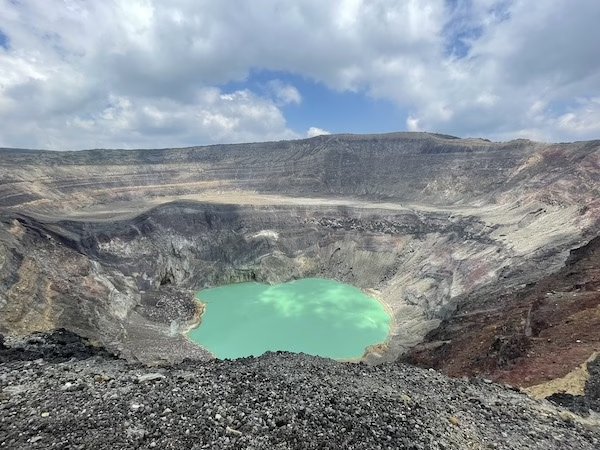
Visit Mayan Ruins
El Salvador was the far edge of the Mayan world. You won’t find any of the impressive pyramids or massive sites like Tikal in nearby Guatemala or Copán in Honduras. And unfortunately, the Mayan culture has been wiped out over the years. However, El Salvador still has a set of ruins that are well worth checking out for anyone interested in ancient Mayan culture.
The ruins at Joya de Ceren are unique in that they show not massive monuments, but the ruins of a residential Mayan village. The village was buried by a volcano eruption, similar to Pompei. It’s one of the only examples of preserved small village structures from the ancient Mayan heyday. The ruins are about an hour or so from Santa Ana.
Nearby are the ruins of San Andrés. San Andrés has a few, mostly unexcavated, pyramids. To be honest, they pale in comparison to sites like Copán or Tikal. However, if you’re visiting Joya de Ceren anyway, you can easily stop off at San Andrés and make a day of it. Both sites are hot and unshaded, so bring sun protection and plenty of water. You can visit easily from Santa Ana.
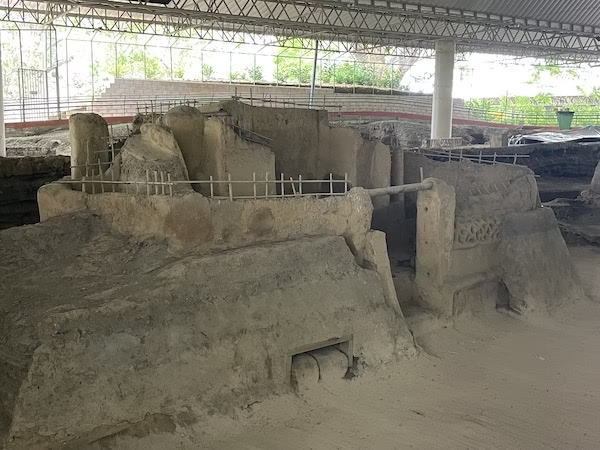
Hike to Some Waterfalls
The highlands surrounding La Ruta de Las Flores are full of cloud forest and lush waterfalls. The most famous waterfall hike is Las Siete Cascadas, or the “Seven Waterfalls.” In reality, the name is misleading. You actually visit like 10 waterfalls.
This hike has to be done with a guide, and it can be arranged in Juayua. You’ll hike up to, and sometimes under, numerous waterfalls in the nearby hills. At one point, we actually used nothing more than a rickety old rope to scale the slippery side of a waterfall. Later on, we came across another tour group that had helmets and professional equipment, and couldn’t help but wonder why our group didn’t. The important thing was that we survived.
If you do the Siete Cascadas hike, be sure to wear your swim gear and a set of good shoes you don’t mind getting wet. In fact, don’t bring anything you don’t want to get wet, or at least have a decent dry bag to store stuff in. The hike is along La Ruta de las Flores.
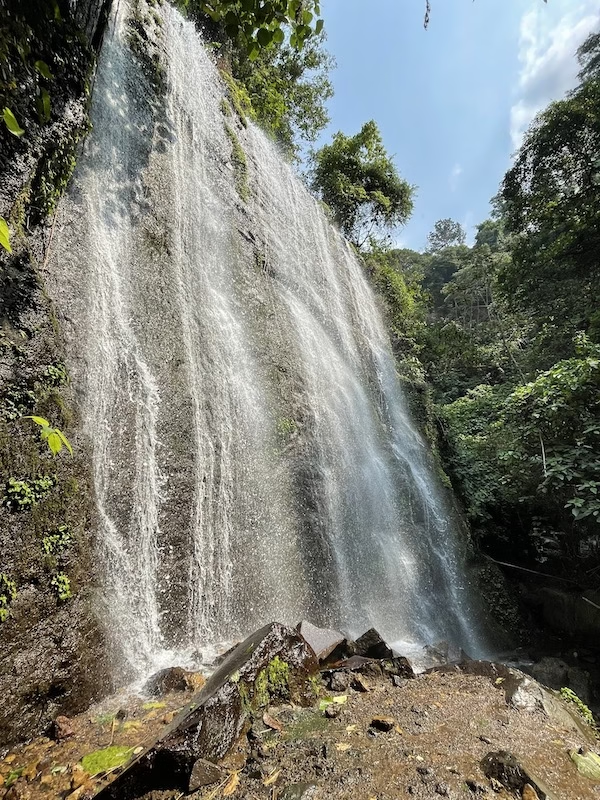
Visit a Coffee Plantation
El Salvador is known for its delicious coffee, and a lot of that coffee is grown in the highlands surrounding La Ruta de Las Flores. If you’re interested in coffee, it’s a lot of fun to visit a plantation and see how coffee is grown and processed. If you time it right, you can visit during the harvest. We timed it wrong, but it was still interesting.
There are a number of coffee farms offering tours throughout El Salvador. We visited El Carmen Estate, located just outside of Concepción de Ataco on la Ruta de las Flores. The tour was informative and inexpensive, and of course included a coffee tasting at the end.
Learn to Surf
I had always wanted to learn how to surf, but growing up in the Midwestern United States, I never had the opportunity. You can’t really surf in a lake.
Part of the reason we stopped in El Tunco along the coast of El Salvador was because I’d heard it was a great place to take surfing lessons. The waves are moderately sized, and there are a number of operators offering reasonably priced surfing classes in town. Despite the low prices, the quality of instruction is good.
I had no idea, however, how exhausting surfing would be. My lesson was supposed to be an hour, but I only made it about 40 minutes. Every muscle in my body ached. I may have collapsed on the beach at the end. I did make it up on the board for nearly an entire second. Surfing is hard.
Okay, so maybe I discovered surfing isn’t my thing. That’s okay, I have other things I can do. If you’re a hardcore surfer already, El Tunco might be too easy for you. However, if you want to give surfing a shot, head to El Tunco and sign up for lessons with one of the many surf shops in town. If nothing else, you’ll gain an appreciation of how difficult surfing actually is.
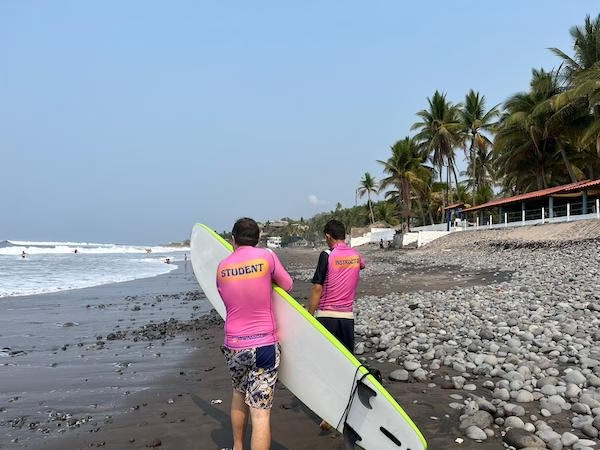
Swim in Lago Coatepeque. Or Don’t.
Lago de Coatepeque is a volcanic lagoon nearby Santa Ana. It’s consistently listed as one of the top things to do in El Salvador. Some places have compared it with Lago Atilán in Guatemala.
Personally, I wasn’t super impressed. The lake is pretty enough, but the whole thing is surrounded by private resorts. You have to essentially rent space in a bar in order to get access to the lake. Then, you spend your whole day basically just hanging out in one bar with a little deck overlooking the lake. There are no trails, no beaches, and no option to really do anything else except swim for a bit and drink beer by the water.
There are much nicer lakes in Central America. Lakes where you aren’t tied to one particular lakeside resort. Overall, Lago Coatepeque is fine if you find yourself with extra time in Santa Ana and want to kill an afternoon. I wouldn’t go out of my way to visit there, though.
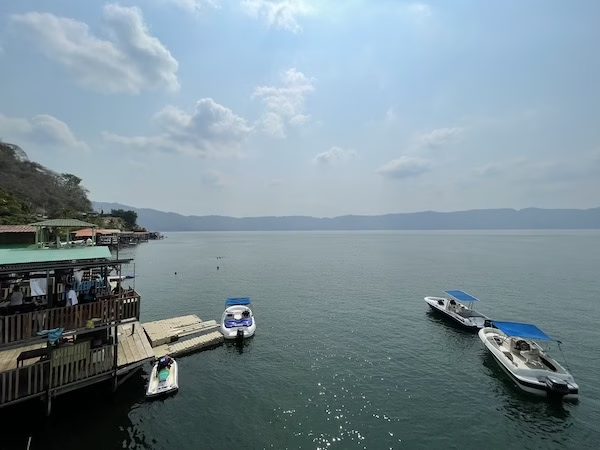
Don’t Skip El Salvador
In the end, we only saw a small piece of El Salvador. Based on what we saw, though, I would love to go back and explore more. We focused mostly on the Western chunk of the country, but there’s the whole Eastern two thirds, as well as numerous other small towns and natural areas throughout the country’s hills and coastline.
And again, I just have to say how friendly the people were. Latin America is a region known for friendly people. El Salvador might be the friendliest country in Latin America. I’ve never felt so welcomed anywhere I’ve traveled before.
El Salvador might not have the rich indigenous culture or raw impressive beauty of some of its neighbors. It more than makes up for this in the warmth and generosity of its people. On top of that, it’s now completely safe. If you’re traveling through Central America, do yourself a favor and don’t skip the charming little gem that is El Salvador.
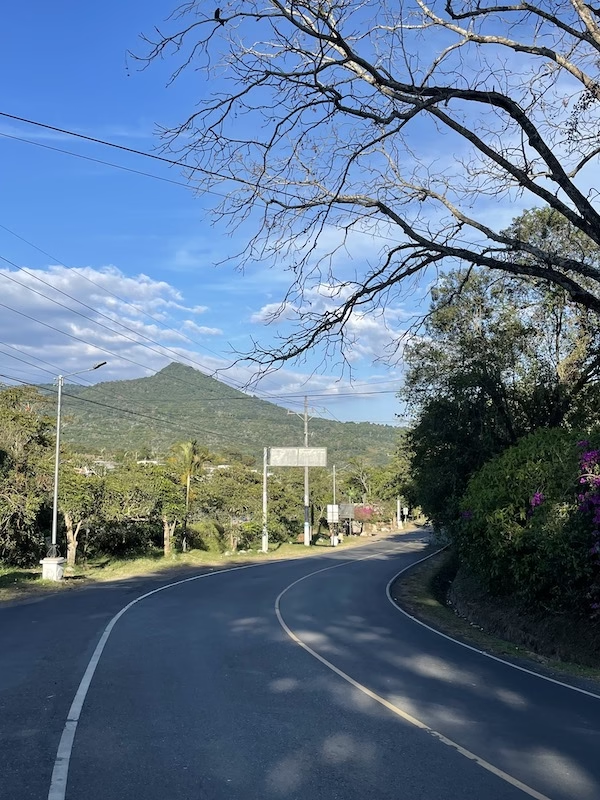
Useful Websites for Traveling El Salvador
As much as we might long for the days when you could show up to a town with nothing more than a beat-up guidebook and a sense of adventure, today much of traveling involves being glued to our phones making bookings. I’ve compiled some helpful apps and websites below that at least help make those bookings more convenient so you can spend less time staring at your phone and more time exploring at your surroundings. Some of these sites are affiliate links that give me a small commission at no cost to you if you chose to book through them. All of them are sites I’ve used personally and have no problem recommending.
Just be sure to do your due diligence as much as possible. Only hire local guides and try as much as possible to stay in locally owned hotels and hostels so that your hard earned travel dollars actually go to support the local economies of the places you visit.
Booking.com is basically the world’s only hotel booking website. They have hotels, guesthouses and vacation rentals all over El Salvador.
Hostelworld is the go-to site for booking hostels. If dorm rooms and shared bathrooms are your thing, you’ll find hostels all over El Salvador.
Get Your Guide offers tours and activities all around the world. Unlike some other sites and apps that do the same thing, you can actually find some reasonably priced deals here.
Centro Coasting is a great website to look up bus routes and times throughout Central America. Schedules change regularly, and the site is sometimes not as up to date as you’d like. However, it’s a good resource to help give you an idea when the buses leave, or at least get you to the right terminal.

